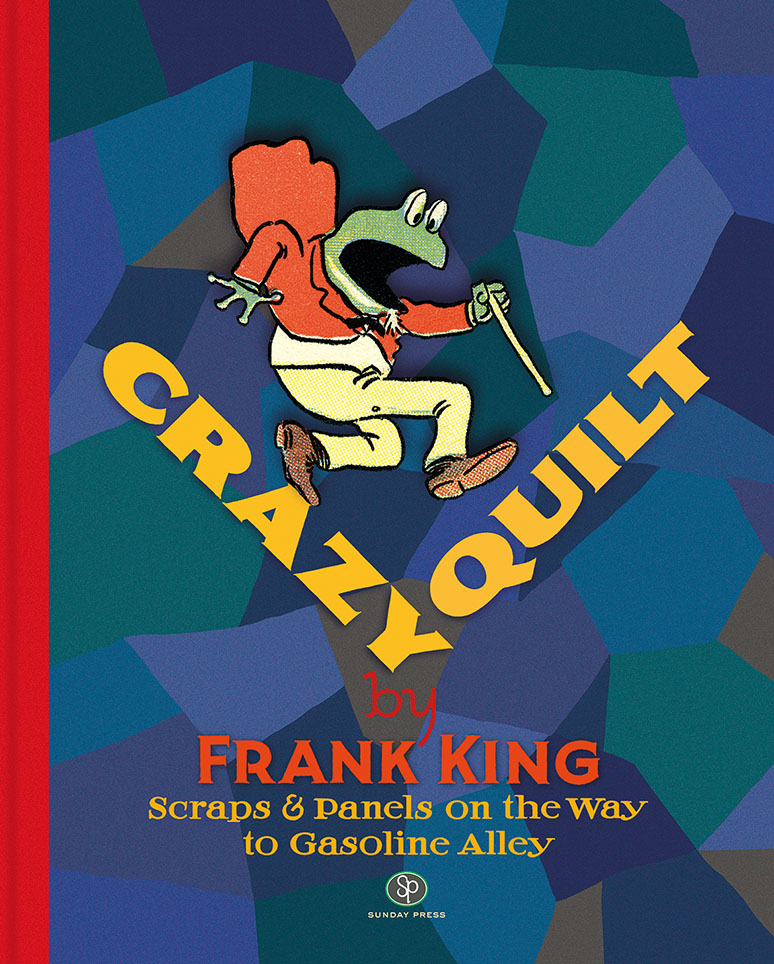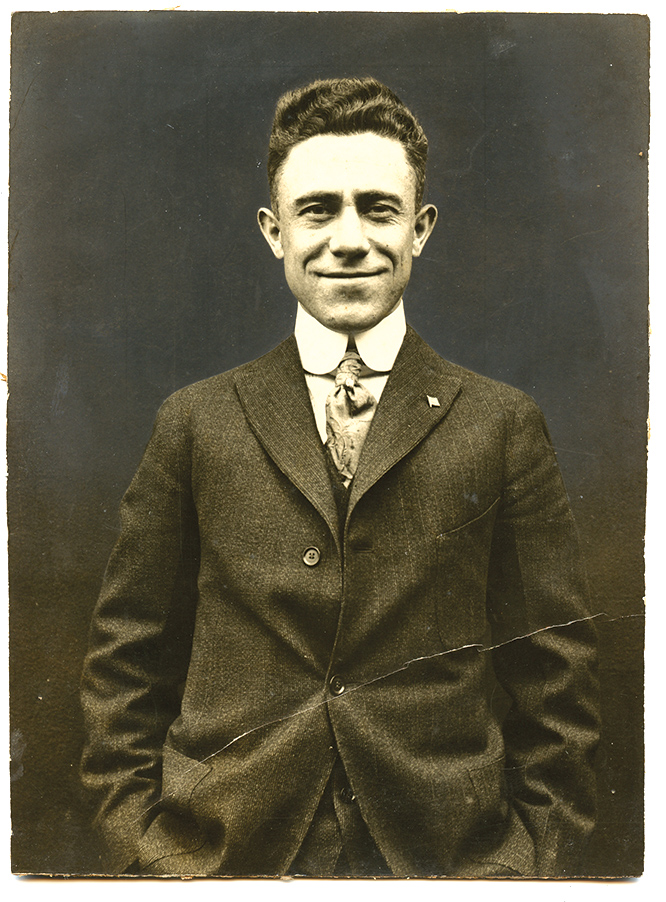
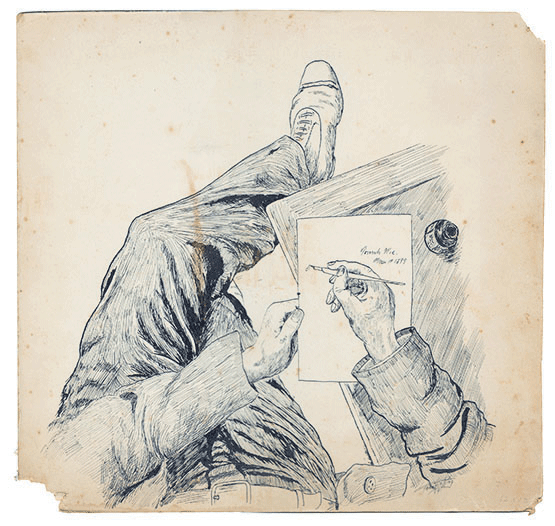
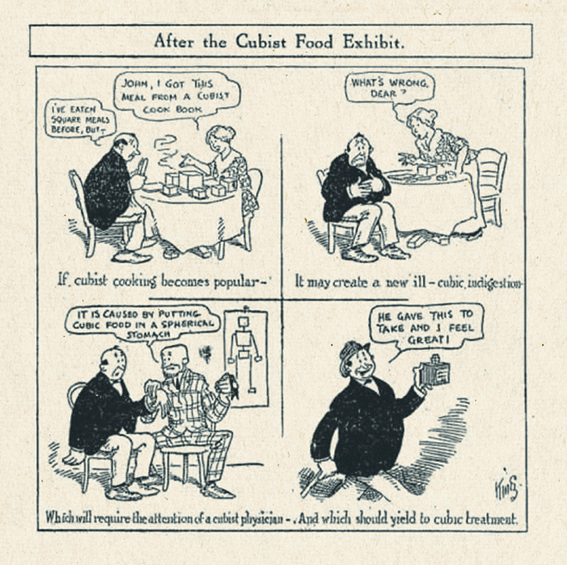
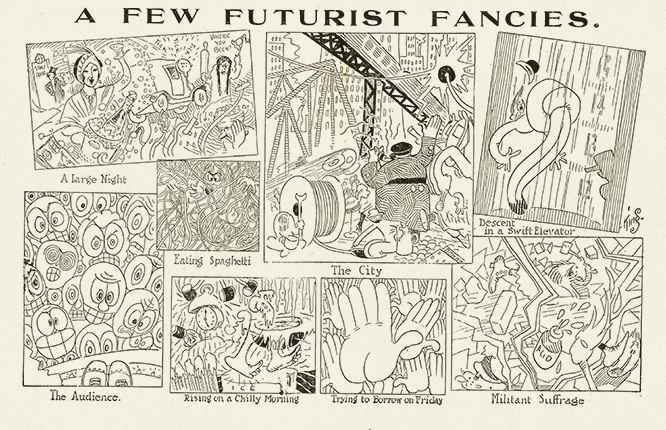
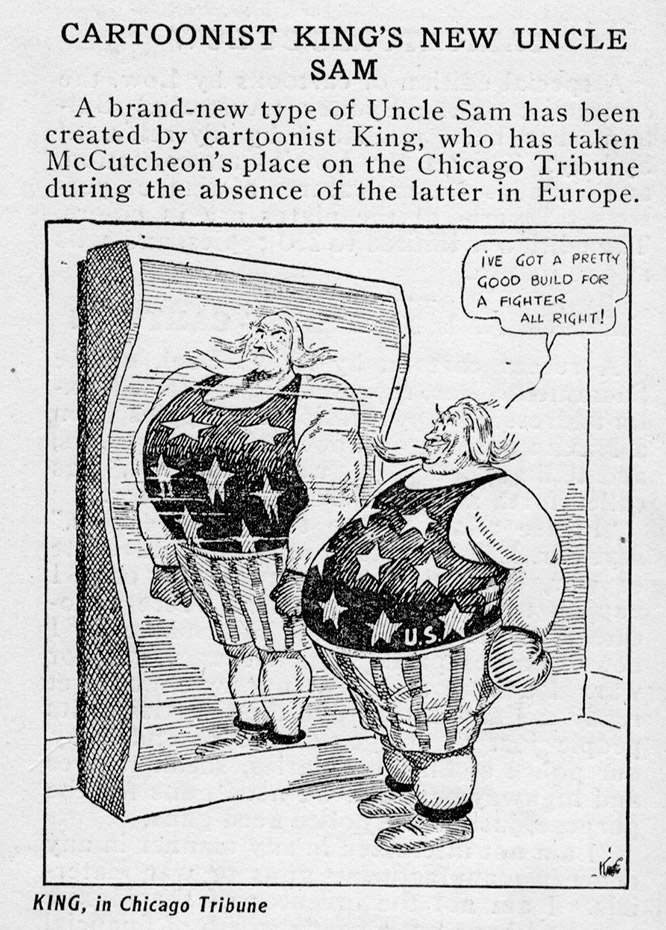
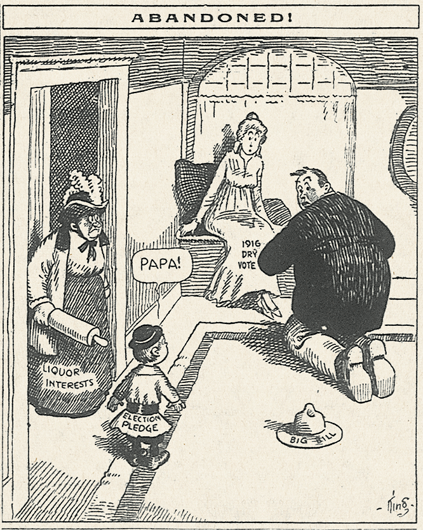
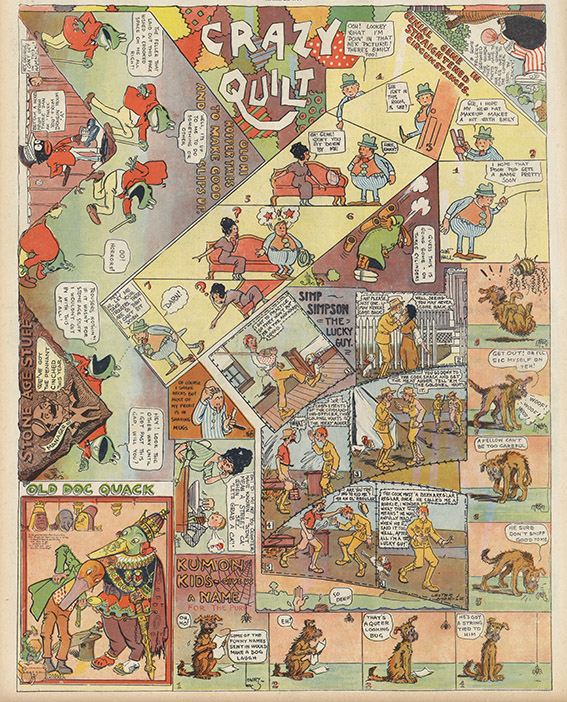
From A Young Man's Game, a Foreword by Chris Ware
Frank King was something of a late bloomer. He was born in Cashton, Wisconsin in 1883, and the first episode of Gasoline Alley did not appear in The Chicago Tribune until 1918, when King was 35 years old. By comparison, George Herriman was 30 upon the earliest emergence of Krazy Kat, and Charles M. Schulz was 28 when Peanuts first appeared. If cartooning is a “young man’s game,” as Robert Crumb has suggested—Zap No. 1, 1968; Crumb was 25—then King got in just under the wire.
Though Gasoline Alley was, in King’s words, a “home life strip,” so described in an essay he wrote late in his life aimed at young cartoonists for Art Instructions, Inc. (as if “home life strip” was a genre he was working within rather than one he had created; Midwestern modesty is a defining characteristic of all of King’s writing and work) before hitting upon the idea of reflecting the ineffable and inevitable slipping away of life in the throwaway newsprint mirror of the comics page, he tried…well, a lot of different things. A whole lot. And this book, for the first time ever, collects the best of them.
King seems to have taken the idea of the comic-strip-as-collage—which my cartoonist friend Ivan Brunetti has also suggested as an alternate thought-model for contemporary experimentation—as a graphic laboratory for his ideas, dividing up the page into different zones wherein any notion or whim might find printed realization. Famously, his “Rectangle” page was where the germ-idea of “Gasoline Alley” first sprouted. Before that, as “Frank King’s Page of Fun” and other catch-all titles, he tried all manner of one-offs, maybe-nots and way-outs, throwing whatever came to mind against the newsprint to see what stuck.
From Crazy Quilts, Krazy Kats and King's Cartoons, an introduction by Jeet Heer
It was either in late March or early April of 1913 that the newspaper cartoonist went to see the Armory Show, which had just arrived in King’s hometown of Chicago after its explosive premier in New York on February 17, 1913. Even more radical than Fry’s 1910 exhibit, the Armory Show was disruptive, polarizing and transformative, giving American audiences an introduction to the works of Paul Gauguin, Henri Matisse, Pablo Picasso, and Marcel Duchamp, among many others.
Encountering the new styles of European—post-impressionism, cubism, futurism—King became a very different artist. Stanley Kubrick’s classic film 2001: A Space Odyssey provides an apt metaphor. In that movie, apes that touch a mysterious monolith make a giant evolutionary leap forward and start using tools, setting the stage for human evolution. The Armory Show was King’s monolith. Before touching it, he was a talented, up-and-coming newspaper cartoonist. After going to the Armory Show, King realized that comics could be art, that the same techniques most advanced painters of his time were using to capture the fluidity and chaos of modern life could be brought to the newspaper page. King absorbed the lessons of modernism and applied it to his own concerns, daily life in America. The Armory Show was the path that allowed King to become one of America’s greatest cartoonists, the master of domestic modernism. (Nor was King alone in his metamorphosis: the Armory Show had a similarly powerful effect on his peers, notably Krazy Kat creator George Herriman).
One of the wonderful things about this sampling of King’s early work is that we can see the transformation happening before our eyes. In the earliest apprentice strips, King is mastering the language of comics. After attending the Armory Show, King and his colleagues at the Chicago Tribune bust out with Crazy Quilt, a 1914 jam of Sunday strips, which ran for three months and featured panels and strips zig-zagging and clashing across the swath of a full tabloid page. As the title indicates, this feature was designed to resemble a crazy quilt (then a popular folk art form), but it also looks like a Cubist painting. After Crazy Quilt, King started his first major Sunday page, Bobby Make-Believe, where he deftly weaved between fantasy and reality in a way that both paid tribute to Winsor McCay’s Little Nemo and anticipated King’s masterpiece, Gasoline Alley. The trajectory is clear: King went from being a superior craftsman to a bold artist after his eyes had soaked in the Armory Show.
From When the World Was His Alley, The Political Cartoons of Frank King, by Warren Bernard
As low man on the cartoon totem pole, Frank King was initially assigned to illustrate the goings on of high society, political events and scandalous courtroom trials. Many of these illustrations accompanied articles written by Tribune writers, while others were drawn from King’s first-person impressions on a wide range of events he covered himself, from the burgeoning suffragette movement to proposed art for City Hall. Along the way, he was honing his observational and drawing skills, key components for any political cartoonist.
In 1911, the Tribune gave him straight illustration assignments for fiction and non-fiction pieces in Sunday editions that also ran his humorous comic strips. He illustrated articles such as “Husbands Should Not Wash Dishes Or Do Any Other Kind Of Housework” and “Mr. Dooley On The Hundred Greatest Men.” This led to King receiving the front page of various interior sections of the Sunday paper, a prestigious canvas.
King ascended to the ranks of front-page political cartoonist in May 1914, when John T. McCutcheon decided he needed another international jaunt to cover the military confrontation between the United States and Mexico. McCutcheon’s slot on the front page was initially taken by Sydney Smith (later of The Gumps), who joined the Tribune cartooning staff in 1912. But on June 7, after five years at the paper, a Frank King creation was the primary political cartoon on the prestigious front page of The Chicago Tribune, then a regional daily with a circulation and geographic reach equal to any great newspaper of the day.
From The Grand Jam Experiment, the birth and death of Crazy Quilt
What exactly is going on here? A first reaction to Crazy Quilt might be to simultaneously scratch your head and ogle with delight. Though the idea that characters from different artists would share a story line is not unique, here the strips themselves intertwine, panels merge and overlap, and the characters and action collide, altering the outcome of these otherwise autonomous bits of sequential art.
There is no record of the origins of this idea, but it is logical to lay the blame at the lip of Frank King’s drawing table. King had shown a proclivity toward experimentation in his drawings and a sense of whimsy with a mechanical precision in his design. The giveaway might be his Hi Hopper comic strip that appeared two weeks before the premier of Crazy Quilt. When a promotional comic strip about naming a cartoon dog ran vertically along side Hopper and other comics on the page, the grouchy yet curious frog peeked though a hole to investigate and comment on his neighbor. This might be called breaking the “second” wall, not between the art and the audience, but between the features themselves.
Sadly, the experiment did not last, but we should be happy this convoluted comic existed at all. This group of staff artists at The Chicago Tribune: Frank King, Sidney Smith, Quin Hall, Everett Lowry, Charles Lederer, Dean Cornwell and Lester J. Ambrose, must have had a ball putting this together, but it must have been tedious work as well. Crazy Quilt was the first of its kind, and nothing like it has been attempted in a Sunday comics section ever since.

